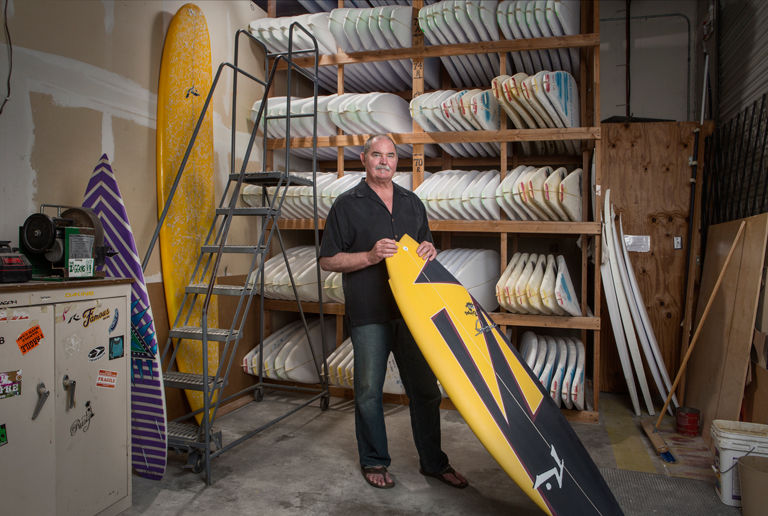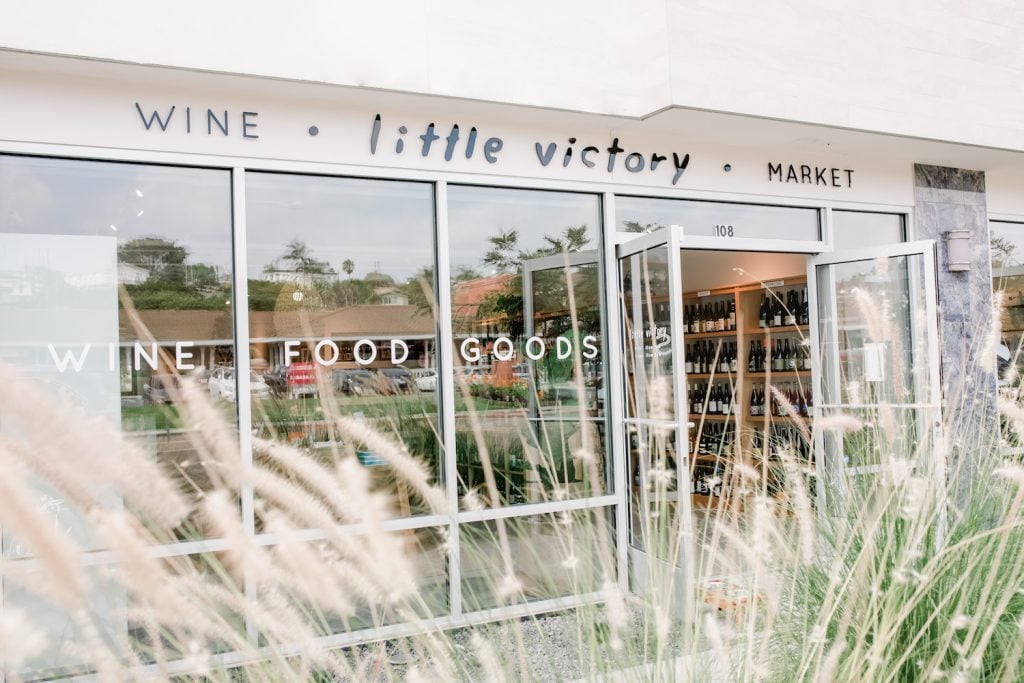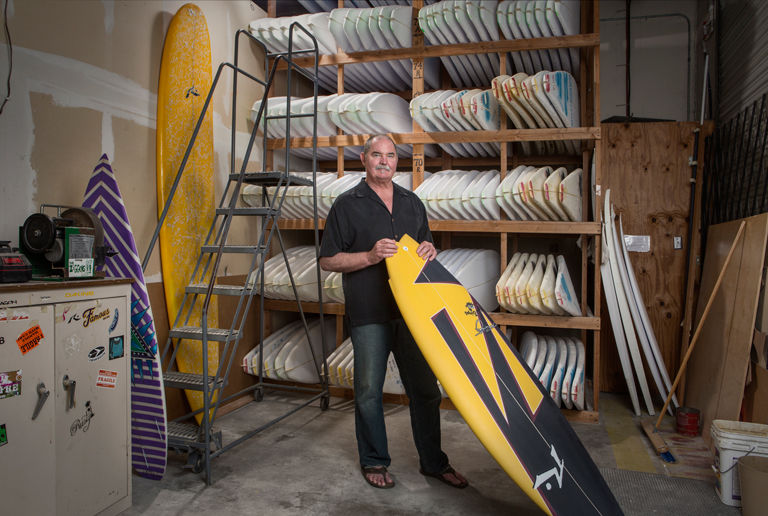Rusty Preisendorfer shaped his first surfboard in La Jolla during the winter of 1969. Forty thousand boards later, he’s a household name around the world, and this month he’s being inducted into the Surfers’ Hall of Fame. We asked the San Diegan to tell us what he’s learned over the years.
Family comes first. My wife, Angie, really helped contribute to my success by allowing me to immerse myself in work and then come home to a goodsituation, with stability and all the good feelings that come with a family.
It’s always so nice to have someone I don’t know come up to me and say, “Thanks for what you’ve done for surfing.” I’ve never looked at it that way, though. I just do what I do and do it the best I can.
I’ll take a B wave that’s uncrowded over an A wave that’s crowded. You sometimes need to be a morning person to be a surfer, but I like to catch these rare windows in the afternoons or evenings when it’s quieter.
I’m really excited for Clint (my son) to be shaping now. He has no reservations about the career path he’s chosen, and to have a child that’s healthy and happy and has a direction in life that they feel good about is a rewarding experience in itself.
The artist and the craftsman part of my career came naturally to me. I think the business part of it was the bigger challenge—I had no idea what I was doing in the beginning.I think the fact that the company is still around and thriving after so long is a testimony to something…
The awards mean a lot to me… to be recognized by my peers. So much has happened between the winter of ’69 and now. I’ve had a long career and, for me, the thing that still really matters is stoking people out—making them happy.
Keeping my ego in check has helped me stay relevant. I’m always observing, looking around and interacting with people and team riders. There’s always room for questioning. Always ask questions and never stop learning.
Surfing is so accepted in the mainstream, especially when you see guys like Laird [Hamilton] and Kelly [Slater] on national commercials, endorsing cars and energy drinks. But the divide between the competitive and counter-culture component is still the same—it’s just evolved over time.
If I could do something differently, I probably wouldn’t have gotten into snowboards in the ’90s. A shoemaker makes shoes… keep it simple. Otherwise I’m pretty happy with the way things have gone.
Keep your tools sharp and your mind sharp. And always keep an open mind. This is it—one life, don’t blow it.
Art is something that is very rewarding—something you can do all your life.
For me, walking up the beach from Shores and finding a wave like Black’s Beach all those years ago was such a blessing… But there’s an infinite realm of possibilities for surf out there. You just have to go looking for it.
I almost bailed on surfboards in the early ’80s. I wanted to start a family and I was a little bit concerned about the ability to generate income by building surfboards. I had some interviews with local graphic art companies and was leaving the company I’d been shaping for. And then I just kept getting busier and busier with surfboard orders. When I did leave the company, customers followed me.
With surfing, every day is a new experience and you never know when you’re going to get good surf. Like in life, you never know when that perfect wave is going to come along.
I don’t see myself stopping shaping. I still enjoy it too much. It’s fun checking out the pluses and minuses of new materials and shapes, but strangely enough we often come back to what we’ve traditionally used.
Once I shaped my first board for myself, it was game on. I really couldn’t make myself enough boards or think of enough things to try. I like to think I can remember all the boards I’ve made, but after 40-some thousand, it’s hard…
We were taking big steps back in the old days. The boards are still evolving now, but the increments are smaller and we’re taking tinier steps. We had pretty big breakthroughs back then, but now it’s more about constant little refinements.

In His Words: Rusty Preisendorfer
Photo by John Durant















